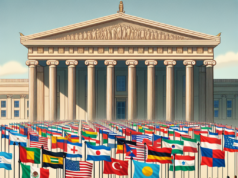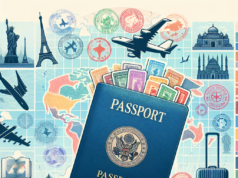
The global asylum landscape is undergoing a profound transformation, marked by increasing numbers of displaced individuals and a complex web of national policies that often fail to provide adequate protection. As conflicts, persecution, and climate change continue to displace millions, the stark realities of global asylum policies reveal a system in crisis. This article delves into the current state of asylum policies, the human stories behind the statistics, the challenges faced by asylum seekers, and the varying approaches taken by different countries. It also examines the role of international law and proposes future directions for a more just and equitable asylum system.
Understanding the Global Asylum Landscape: An Overview of Current Policies and Trends
The global asylum landscape is characterized by a patchwork of policies that vary significantly from one country to another. As of 2023, the United Nations High Commissioner for Refugees (UNHCR) reports that over 26 million people are classified as refugees, with millions more seeking asylum. While some countries have adopted progressive policies aimed at protecting the rights of asylum seekers, others have implemented restrictive measures that prioritize border security over humanitarian obligations. Trends indicate a growing polarization in asylum policies, with some nations tightening their borders and others advocating for more inclusive approaches. The COVID-19 pandemic has further complicated the situation, leading to increased restrictions on movement and access to asylum procedures, exacerbating the vulnerabilities faced by those seeking refuge.
The Human Cost of Asylum: Personal Stories Behind the Statistics and Policies
Behind the statistics of asylum seekers lie harrowing personal stories that highlight the human cost of displacement. Take, for instance, the story of Amina, a young woman from Syria who fled her war-torn homeland after losing her family to violence. Her journey to safety was fraught with peril, including treacherous crossings and encounters with smugglers. Amina’s experience is not unique; countless individuals face similar challenges, often enduring trauma and hardship in their quest for safety. These personal narratives underscore the urgent need for policies that prioritize human dignity and protection, rather than merely focusing on numbers and border control. The emotional and psychological toll of displacement is profound, and it is imperative that policymakers recognize the humanity behind the statistics.
Key Challenges Facing Asylum Seekers: Barriers to Protection and Integration
Asylum seekers encounter numerous barriers that hinder their access to protection and integration into host societies. Legal obstacles, such as lengthy asylum processes and restrictive eligibility criteria, often leave individuals in limbo for extended periods. Additionally, language barriers, lack of access to legal assistance, and limited resources can impede their ability to navigate the asylum system effectively. Social integration poses another significant challenge, as many asylum seekers face discrimination and xenophobia in their new communities. The lack of support services, including housing, healthcare, and employment opportunities, further exacerbates their vulnerability. Addressing these challenges requires a comprehensive approach that not only streamlines asylum processes but also fosters social cohesion and inclusion.
Comparative Analysis: How Different Countries Approach Asylum and Refugee Protection
Countries around the world adopt varying approaches to asylum and refugee protection, reflecting their political, social, and economic contexts. For instance, Canada is often lauded for its inclusive asylum policies, which emphasize community sponsorship and support for refugees. In contrast, the European Union has faced criticism for its fragmented asylum system, where member states implement divergent policies that can lead to unequal treatment of asylum seekers. The United States has also seen significant fluctuations in its asylum policies, with recent administrations oscillating between more welcoming and more restrictive stances. This comparative analysis highlights the importance of national context in shaping asylum policies and the need for international cooperation to establish a more cohesive and humane global framework.
The Role of International Law: Obligations and Gaps in Global Asylum Frameworks
International law plays a crucial role in shaping asylum policies and protecting the rights of refugees. The 1951 Refugee Convention and its 1967 Protocol establish fundamental principles, including the right to seek asylum and the principle of non-refoulement, which prohibits the return of individuals to countries where they face persecution. However, significant gaps remain in the global asylum framework, as many countries fail to fully comply with their international obligations. The rise of populism and nationalism has further strained the commitment to these principles, leading to increased violations of asylum seekers’ rights. Strengthening international legal frameworks and ensuring accountability for violations are essential steps toward creating a more just and equitable asylum system.
Future Directions: Rethinking Asylum Policies for a More Just and Equitable System
As the global asylum crisis deepens, there is an urgent need to rethink existing policies to create a more just and equitable system. This involves not only reforming national asylum processes to ensure timely and fair adjudication but also fostering international cooperation to share the responsibility of hosting refugees. Innovative solutions, such as community-based sponsorship programs and enhanced support for integration, can help bridge the gap between asylum seekers and host communities. Additionally, addressing the root causes of displacement, including conflict resolution and climate change mitigation, is essential for reducing the number of individuals forced to seek asylum. A holistic approach that prioritizes human rights and dignity will be crucial in shaping the future of global asylum policies.
The stark realities of global asylum policies reveal a system in crisis, where the rights and dignity of millions are at stake. As the world grapples with unprecedented levels of displacement, it is imperative that policymakers, civil society, and international organizations work collaboratively to address the challenges faced by asylum seekers. By prioritizing human rights, fostering inclusive policies, and strengthening international legal frameworks, we can move toward a more just and equitable asylum system that upholds the fundamental principles of protection and dignity for all.


























